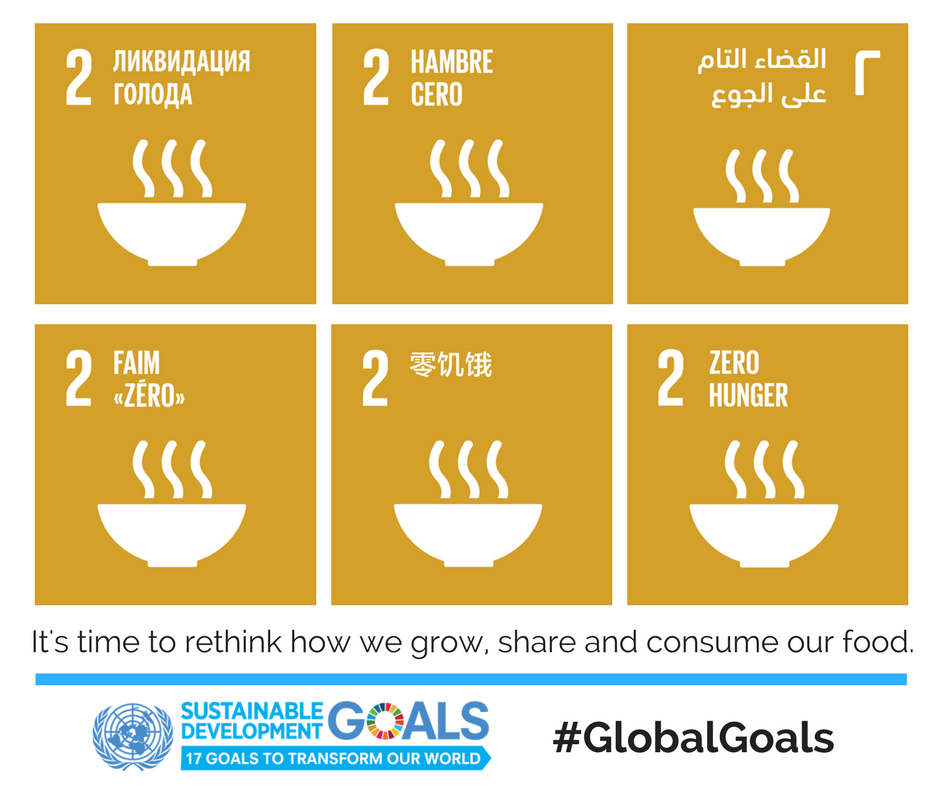It is time to rethink how we grow, share and consume our food. If done right, agriculture, forestry and fisheries can provide nutritious food for all and generate decent incomes, while supporting people-centered rural development and protecting the environment.Right now, our soils, freshwater, oceans, forests and biodiversity are being rapidly degraded. Climate change is putting even more pressure on the resources we depend on, increasing risks associated with disasters, such as droughts and floods. Many rural women and men can no longer make ends meet on their land, forcing them to migrate to cities in search of opportunities. Poor food security is also causing millions of children to be stunted, or too short for the ages, due to severe malnutrition.A profound change of the global food and agriculture system is needed if we are to nourish the 815 million people who are hungry today and the additional 2 billion people expected to be undernourished by 2050. Investments in agriculture are crucial to increasing the capacity for agricultural productivity and sustainable food production systems are necessary to help alleviate the perils of hunger.Photo: Two and a half million people in the Central African Republic (CAR) are facing hunger.Facts and FiguresGoal 2 targetsLinksHungerGlobally, one in nine people in the world today (815 million) are undernourishedThe majority of the world’s hungry people live in developing countries, where 12.9 per cent of the population is undernourished.Asia is the continent with the hungriest people – two thirds of the total. The percentage in southern Asia has fallen in recent years but in western Asia it has increased slightly.Southern Asia faces the greatest hunger burden, with about 281 million undernourished people. In sub-Saharan Africa, projections for the 2014-2016 period indicate a rate of undernourishment of almost 23 per cent.Poor nutrition causes nearly half (45 per cent) of deaths in children under five – 3.1 million children each year.One in four of the world’s children suffer stunted growth. In developing countries, the proportion can rise to one in three.66 million primary school-age children attend classes hungry across the developing world, with 23 million in Africa alone.Food securityAgriculture is the single largest employer in the world, providing livelihoods for 40 per cent of today’s global population. It is the largest source of income and jobs for poor rural households.500 million small farms worldwide, most still rainfed, provide up to 80 per cent of food consumed in a large part of the developing world. Investing in smallholder women and men is an important way to increase food security and nutrition for the poorest, as well as food production for local and global markets.Since the 1900s, some 75 per cent of crop diversity has been lost from farmers’ fields. Better use of agricultural biodiversity can contribute to more nutritious diets, enhanced livelihoods for farming communities and more resilient and sustainable farming systems.If women farmers had the same access to resources as men, the number of hungry in the world could be reduced by up to 150 million.4 billion people have no access to electricity worldwide – most of whom live in rural areas of the developing world. Energy poverty in many regions is a fundamental barrier to reducing hunger and ensuring that the world can produce enough food to meet future demand.
Адвокат, оказываю высококвалифицированную юридическую помощь в соответствии с законами. За многолетний опыт работы выработал свой, уникальный подход к работе с клиентами.
Заголовок
Вы можете выбрать стиль текста, его начертание и цвет…
© 2018 INHR (Registered with the UNITED NATIONS / DESA)
Office 1
- +41767689990
- IHRC - International Human Rights Commission, GENEVE : Mailing office: 31 Rue Vollande, 1207 Geneva Switzerland, GENEVA, GE, SWITZERLAND
- ihrc.geneva.hq@gmail.com / OR: ihrc.geneva.me@gmail.com
- https://twitter.com/IntAgHumRights
